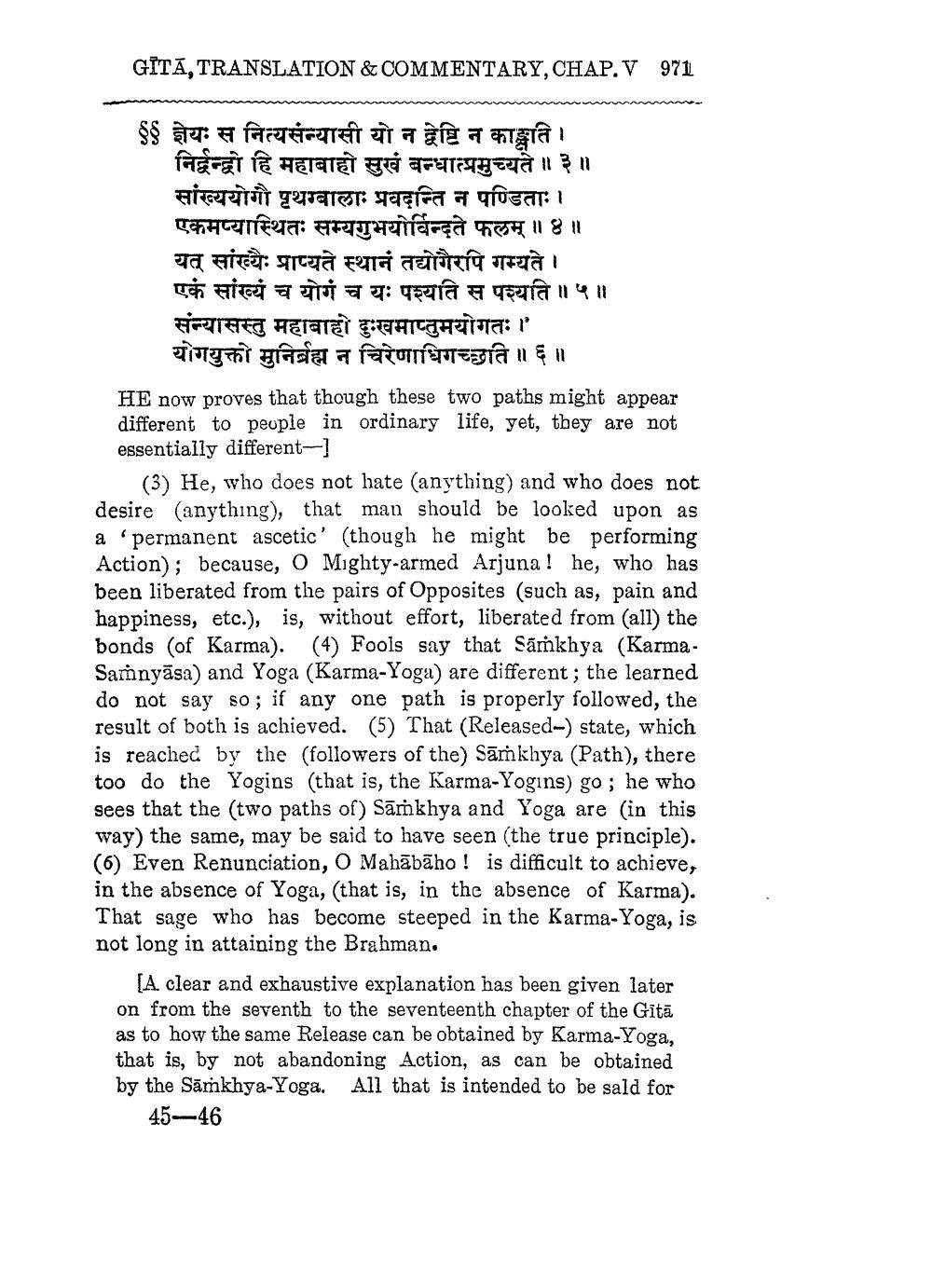________________
GITA, TRANSLATION & COMMENTARY, CHAP.V
$$ ज्ञेयः स नित्यसंन्यासी यो न द्वेष्टि न काङ्क्षति ।
निर्द्वन्द्वी हि महाबाहो सुखं बन्धात्प्रमुच्यते ॥ ३ ॥ सांख्ययोग पृथग्बालाः प्रवदन्ति न पण्डिताः । एकमप्यास्थितः सम्यगुभयोर्विन्दते फलम् ॥ ४ ॥ यत् सांख्यैः प्राप्यते स्थानं तद्योगैरपि गम्यते । एकं सांख्यं च योगं च यः पश्यति स पश्यति ॥ ५ ॥ संन्यासस्तु महाबाहो दुःखमाप्तुमयोगतः " योगयुक्त मुनिर्ब्रह्म न चिरेणाधिगच्छति ॥ ६ ॥
971
HE now proves that though these two paths might appear different to people in ordinary life, yet, they are not essentially different-]
a
(3) He, who does not hate (anything) and who does not desire (anything), that man should be looked upon as 'permanent ascetic' (though he might be performing Action); because, O Mighty-armed Arjuna! he, who has been liberated from the pairs of Opposites (such as, pain and happiness, etc.), is, without effort, liberated from (all) the bonds (of Karma). (4) Fools say that Samkhya (KarmaSamnyasa) and Yoga (Karma-Yoga) are different; the learned do not say so; if any one path is properly followed, the result of both is achieved. (5) That (Released-) state, which is reached by the (followers of the) Samkhya (Path), there too do the Yogins (that is, the Karma-Yogins) go; he who sees that the (two paths of) Samkhya and Yoga are (in this way) the same, may be said to have seen (the true principle). (6) Even Renunciation, O Mahābāho! is difficult to achieve, in the absence of Yoga, (that is, in the absence of Karma). That sage who has become steeped in the Karma-Yoga, is not long in attaining the Brahman.
[A clear and exhaustive explanation has been given later on from the seventh to the seventeenth chapter of the Gītā as to how the same Release can be obtained by Karma-Yoga, that is, by not abandoning Action, as can be obtained by the Samkhya-Yoga. All that is intended to be sald for
45-46




